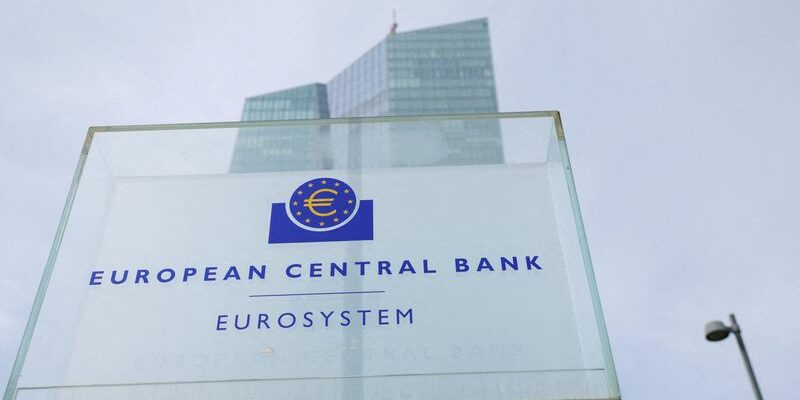by Francesco Canepa
WASHINGTON (Reuters) – European Central Bank (ECB) governors fear that publishing an interest rate forecast, modeled on the Federal Reserve’s (Fed) dot plot, could lead to political pressure which could call into question the independence of the institution, sources told Reuters.
Last week, Isabel Schnabel, one of the members of the Governing Council, proposed publishing the anonymized rate expectations of the institution’s officials, in order to better inform the markets. The Federal Reserve publishes its dot plots four times a year.
However, 13 of his colleagues within the Council almost unanimously declared to Reuters that such a decision would call into question the independence of the ECB vis-à-vis the member countries of the euro zone. The ECB must in fact deal with 20 different governments, where the Fed only depends on one.
Members of the ECB Governing Council believe that European politicians would seek to know which projection is that of the governor of the local central bank, in order to make him express a view more in line with domestic interests.
Some of the sources interviewed by Reuters, however, believe the idea is not without merit, with others saying they are open to discussing the proposal at the next ECB review, scheduled for next year.
An ECB spokesperson declined to comment.
The ECB seeks to limit political interference by not publishing voting results after its monetary policy decisions, while its reports are anonymized.
Isabel Schnabel also proposed publishing alternative scenarios in addition to the main ECB scenario, without arousing the enthusiasm of her colleagues.
Too many different scenarios are possible, certain sources point out.
REVIEW
The Eurosystem’s 20 national central banks are independent of the domestic executive, but most governors need political support in order to be re-elected.
A 2021 research paper by economists Friedrich Heinemann and Jan Kemper shows that ECB policymakers who favor low rates tend to come from highly indebted countries, while restrictive policymakers tend to come from countries with low debt levels. debt are low.
These conclusions are especially true for the 20 members of the Governing Council who are themselves governors of national central banks. The six members of the executive committee, elected during a pan-European process, are more independent.
The Bank of England and the Bank of Korea are also considering changing the way their economic forecasts are conducted and announced.
(Reporting Francesco Canepa in Washington, French version Corentin Chappron, edited by Blandine Hénault)
Copyright © 2024 Thomson Reuters
